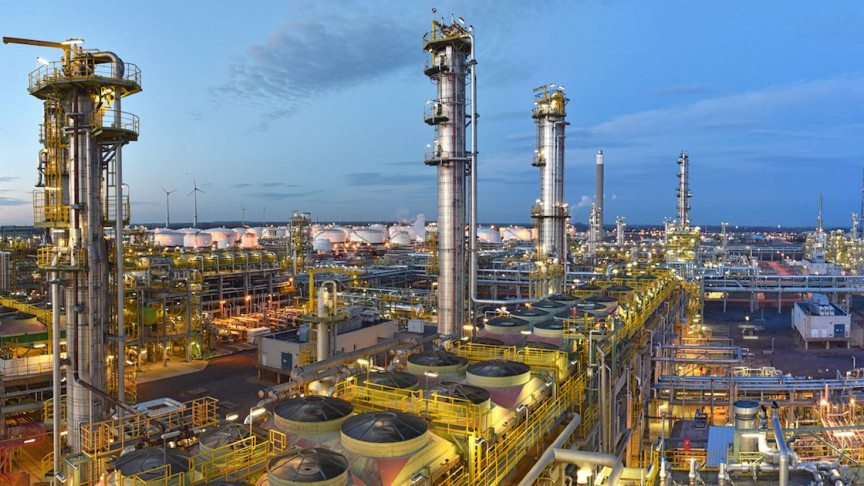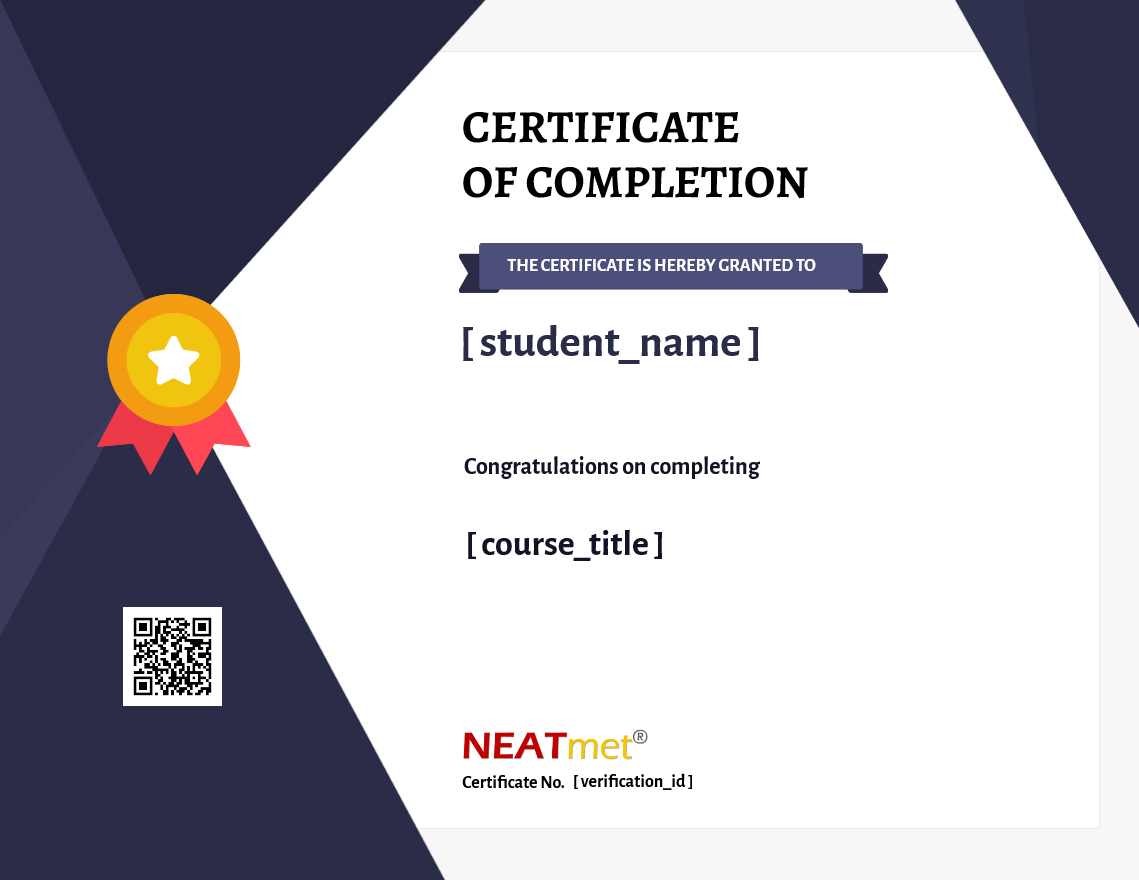Petroleum Engineering Preparation
By NEATmet Learning Hub
Categories: Technical Development

About Course
This Refresher Course helps aspiring candidates to recapitulate and improve their fundamental knowledge on various subjects pertaining to Petroleum Engineering.
It covers the relevant topics under the academic curriculum for Graduate and Diploma level Engineering, where video lectures from world class institutions e.g. IITs, IISc etc. have been facilitated for dissemination of knowledge.
What Will You Learn?
- Petroleum Exploration
- Oil and Gas Well Drilling Technology
- Reservoir Engineering
- Petroleum Production Operations
- Offshore Drilling and Production Practices
- Petroleum Formation Evaluation
- Oil and Gas Well Testing
- Health Safety and Environment in Petroleum Industry
- Enhanced Oil Recovery Techniques
Course Content
Petroleum Exploration
-
Sedimentary Petrology
29:05 -
Migration of petroleum
28:20 -
Clastic and non clastic sedimentary rocks
03:29 -
Migration and Accumulation of Petroleum
07:03 -
Petroleum Exploration methods
09:20
Oil and Gas Well Drilling Technology
-
Directional Well Planning
38:49 -
Oil Drilling | Oil & Gas Animations
08:22 -
Formation Of Reservoir Rock | Oil & Gas Animations
02:16 -
Seismic 3D Imaging | Oil & Gas School
01:26 -
Well Stimulation
10:20 -
Drilling -well Planning
26:48 -
Main Parts of Drilling Rig
25:49 -
Introduction to Drilling Fluids
20:04 -
Drilling fluid maintenance equipment
06:38 -
Oil and Gas Well Cementing Operations – Primary cementing
06:10 -
Types of Drills and their uses
11:47 -
Running Casing Strings in Oil and Gas Wells
07:02 -
Common Well Drilling Problems and Solutions
04:37 -
Horizontal Directional Drilling / Boring (HDD)
02:08 -
Directional Drilling
45:56 -
Multilateral Drilling Wells Terminology, Applications & Classifications System
01:06 -
Extended Reach Drilling 3D animation
02:08
Reservoir Engineering
-
Reservoir – Rock Fluid Properties
01:32 -
Hydrocarbon phase behaviour
37:10 -
Reservoir Engineering | Flow in Porus Media| Indroduction
05:41 -
Interfacial tension
08:20 -
Young Laplace equation
11:55 -
Young equation and contact angle
10:29 -
Rocks and wettability
12:29 -
Patterns, percolation and pores
34:04 -
Snap-off and trapping
11:08 -
Calculating capillary pressure
14:54 -
Percolation and porous media
29:30 -
Layers of water and oil
10:30 -
Capillary pressure
20:48 -
Navier Stokes equation
12:33 -
Darcy’s law
18:03 -
Pore size and permeability
16:11 -
Calculating permeability
20:25 -
Leverett J-function
12:20 -
Relative permeability
20:40 -
Relative permeability, wettability and recovery
30:36 -
Multiphase conservation equation
19:43 -
Oil spreading
07:02 -
Why ducks don’t get wet
14:54 -
Reservoir Engineering | Mineral reserve estimation
17:11 -
Gas & Water Coning
26:33 -
Pressure Measurement
59:23 -
Reservoir Drive Mechanism
53:31
Offshore Drilling and Production Practices
-
Offshore Drilling
05:35 -
An Introduction to Oil and Gas Operations Offshore
17:39 -
How Offshore Oil Rigs Work
12:05 -
Offshore platform (components, platform design)
10:33 -
Dynamic Positioning Systems, Principles, Design and Applications
10:04 -
Subsea riser design and the challenges of deepwater oil & gas
01:02:18 -
Water Injection performance monitoring
07:03 -
SBM / SPM Mooring
07:39 -
How a deep water well is drilled
05:32
Petroleum Formation Evaluation
-
Introduction to the Formation Evaluation of Carbonate Rocks
02:10:04 -
RE Analysis 2: Formation Evaluation
05:54 -
Well Log Interpretation
19:12 -
Well Logging
07:40 -
Well Logging : SP & GR Log
01:58 -
Archie’s equation
10:54 -
Archie’s equation – part 2
08:26 -
Archie’s equation – Part3: Water saturation
14:05 -
Archie’s Equation – Part4: Moveable hydrocarbon index
13:37 -
Archie’s Equation – Part5: The Pickett plot
13:10 -
Well Logging : Gamma Ray Log
01:05 -
Well Logging : Gamma Raya Tool
02:51 -
Well Logging : SP & GR Log
01:58 -
Well Logging : GR & Neutron Porosity Log
03:06 -
Well Logging : Sonic Log
02:39 -
Petrophysics
08:35 -
Well Logging : Borehole Environment
04:09 -
Subsea riser design and the challenges of deepwater oil & gas
01:02:18
Petroleum Production Operations
-
Natural Gas Engineering
05:03 -
Introduction to Natural Gas – I
59:50 -
Introduction to Natural Gas – II
46:59 -
Introduction to Natural Gas – III
38:27 -
Properties of Natural Gas-I
46:21 -
Properties of Natural Gas-II
49:36 -
Properties of Reservoir
51:51 -
Inflow Performance Relationship (IPR)-I
01:01:15 -
Inflow Performance Relationship (IPR)-II
57:06 -
Gas Well Testing
01:09:05 -
Wellbore Performance Relationship (WPR)
01:23:54 -
Choke Performance Relationship (CPR)
59:26 -
Nodal Analysis
42:52 -
Natural Gas Separation – I
01:02:09 -
Natural Gas Separation – II
01:16:30 -
Dehydration of Natural Gas
01:08:09 -
Sweeting of Natural Gas
38:59 -
Compressor Design
01:03:44 -
Measurement of Natural Gas
57:10 -
Transportation of Natural Gas – I
01:07:04 -
Transportation of Natural Gas – II
01:06:12 -
Unconventional production of Natural Gas
47:47 -
Review: Concluding Remarks
21:42
Oil and Gas Well Testing
-
Well Test (Part-1)
01:05:44 -
Well Testing
07:39 -
Basic radial diffusivity equation
20:40 -
Principle of superposition
15:09 -
Well Testing 2
07:39
Health Safety and Environment in Petroleum Industry
-
Introduction and Terminologies
13:30 -
Introduction to HSE
08:18 -
Safety assurance and assessment(Contd)
26:20 -
Organizing for safety
19:41 -
Hazard classification and assessment, Hazard evaluation and hazard control
37:17 -
HaZOP
35:16 -
HaZOP (contd.)
44:18 -
Hazard evaluation and hazard control
28:28 -
Hazard Identification and Management in Oil & Gas Industry using HAZOP
37:03 -
FMEA
37:50 -
FMEA (contd.)
27:15 -
Environmental Issues and Management
26:18 -
Impact of Oil and Gas Industry on Marine Environment
21:49 -
Oil Hydrocarbon in Marine Environment
15:12 -
Chemicals and Wastes from Offshore and Oil Industry
25:16 -
Dispersion Models — Atmospheric Pollution
18:50 -
Dispersion Models (Contd.)
28:08 -
Hazard Assessment and Accident Scenario
09:18 -
Dose Assessment, Safety Regulation
32:58 -
Chemical Exposure Index (CEI)
28:28 -
Quantitative Risk Assessment
32:40 -
Quantitative Risk Assessment (Liquid Release Models Case Study – Continued)
40:07 -
Fire and Explosion Modeling
30:16 -
Fire and Explosion Modeling Flammability Diagrams
18:23 -
Explosion Modeling
36:26 -
Fire and Explosion Preventive Measures
28:43 -
Probabilistic Risk Analysis
18:50 -
Safety Measures in Design and Process Operations
34:06 -
Case Studies
32:43
Enhanced Oil Recovery Techniques
-
Enhanced Oil Recovery
01:01:01 -
Basic principles and mechanism of EOR
21:17 -
Enhanced Oil Recovery 2
30:03
Latest trends in Petroleum Engineering
-
Coal Bed Methane (CBM)
04:13 -
Shale Gas
07:25 -
Turning Oil Shale into fuel
02:46 -
Gas hydrate extraction
03:05 -
Petroleum refining processes explained simply
02:49
Earn a Certificate
Add this credential to your LinkedIn profile, resume, or CV, share it on social media and get noticed

Student Ratings & Reviews

No Review Yet
